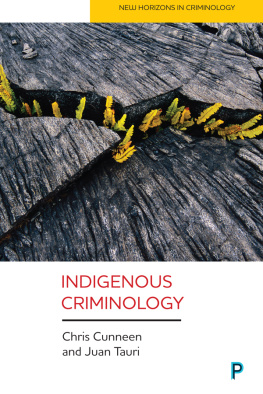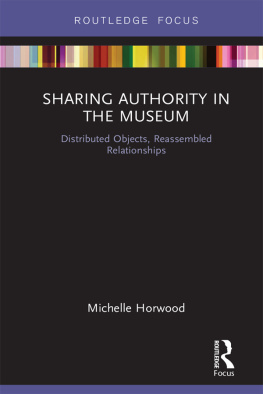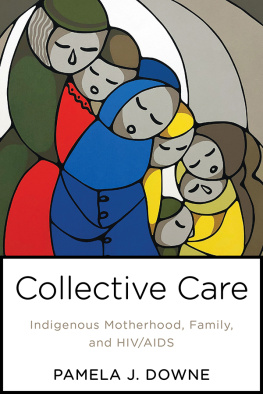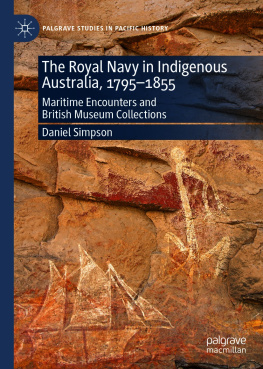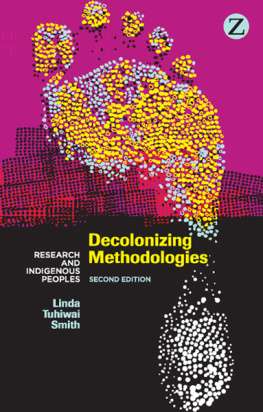MUSEUMS AND MORI
HERITAGE PROFESSIONALS INDIGENOUS COLLECTIONS CURRENT PRACTICE
CONAL MCCARTHY
First published 2011 by Left Coast Press, Inc.
Published 2016 by Routledge
2 Park Square, Milton Park, Abingdon, Oxon OX14 4RN
711 Third Avenue, New York, NY 10017, USA
Routledge is an imprint of the Taylor & Francis Group, an informa business
Copyright 2011 by Conal McCarthy
All rights reserved. No part of this book may be reprinted or reproduced or utilised in any form or by any electronic, mechanical, or other means, now known or hereafter invented, including photocopying and recording, or in any information storage or retrieval system, without permission in writing from the publishers.
Notice:
Product or corporate names may be trademarks or registered trademarks, and are used only for identification and explanation without intent to infringe.
National Library of New Zealand Cataloguing-in-Publication Data
McCarthy, Conal, 1961-
Museums and Mori: heritage professionals, indigenous collections,
current practice / Conal McCarthy.
Includes bibliographical references and index.
ISBN 978-1-877385-70-4
1. Maori (New Zealand people)AntiquitiesCollection and preservation.
2. Maori (New Zealand people)Material culture.
3. Museums and minoritiesNew Zealand.
[1. Whare taonga. reo 2. Mana whakairo hinengaro. reo] I. Title.
993.004994420074dc 22
Cover design by Sarah Healey
Typesetting by IslandBridge
Front cover image: Auckland War Memorial Museum
Back cover images: Exhibits at the Auckland War Memorial Museum, c. 1870s
and kaitiaki Mori Lisa Ward at Museum of New Zealand Te Papa Tongarewa
Maps by Geographx
Digital imaging by Jeremy Glyde
ISBN 978-1-61132-076-3 hardcover
ISBN 978-1-61132-077-0 paperback
Figures
All images are owned by the Museum of New Zealand Te Papa Tongarewa, unless otherwise credited.
Title page. Te Arawa warriors carrying Pkk upstairs at the Rotorua District Council building, 1997, New Zealand Herald.
Boxes
Many Mori words are in common usage in New Zealand English. Where they are not translated in the text, the reader is referred to the glossary. Translations are the authors own, except where otherwise stated. Mori texts have been edited to conform to modern conventions, including the addition of macrons, except in the appendix where the Treaty of Waitangi has been left in its original form.
Macrons indicate a double vowel in te reo Mori (the Mori language). Mori words in book and exhibition titles and in names of organisations have been left in their original form. If they did not have a macron historically, macrons have not been added.
He taonga te wareware
He whare t ki roto i te p twatawata, in te tohu o te rangatira.
Kaati, e hika, Konere, tn koe. Nu ra nei krero i tuhi hei whakaaroaro m te katoa, huri noa i te ao. Ae, titiro mai e te iwi whnui tonu: anei a Aotearoa me na nei krero mei kore pea he painga o roto whngai atu. E ora ai ng iwi taketake o te ao, e huri pai mai ng mana whakahaere i te kaupapa toko i ng tikanga iwi. Kaati, anei tahi kupu m te tangata koi hei tawhiriwhiri, he tapuwae n rtau m.
Ng mihi hoki ki ng kaiwhakautu i o ptai, t ki roto i u ng mahi rangahau. Tn koutou kei ng kaimahi, kei ng kaitiaki e whakatinana nei i nei kaupapa taukite, ng krero e mrama mai ai ng hikoinga o nehe, o nianei, tn pea mo te w ka t mai.
Tn ttau e te iwi; ttau katoa ahakoa n whea, huri noa te ao, tn ttau e rapu nei i ng ara ttika e mau ai te mana, te tau, te mharo ttau taonga tna kite, tna hanga, tna whakaatu, na krero, te tuku, te tauawhi, te whakahau rangatira. Te tmanako ka puritia nei thuatanga. Anei tahi tuhituhi whakaohooho i te ngkau pmahara, i te ringa kakama, i te kaitiaki, he ahakoa n whea mai. Kei te tautoko ake i ng whakaaro kia anga nui ake ttau ki t ttau tino rangatiratanga e puawai ai nei kaupapa i a ttau an t te ngkau Mori, ta te ringaringa Mori an hoki.
Mauriora ki te iwi.
Haere e te pukapuka, haere me te manawaroa.
It is with great pleasure that I write these few words in acknowledgement of this publication. In thanking the author for his scholarly discourse, I am mindful of the global interest that these views invoke. I am grateful as a Mori for being able to read something of our story, something we share dearly and generously with other indigenous nations from a position of relative advantage, but nonetheless shared concerns.
May I also extend gratitude to those who have assisted Conal in this research-based publication. Thank you to our workers and guardians, for all that you accomplish on a daily basis, and in a way that honours past duty and stewardship, as well as provides exciting potential for the way ahead.
And to us all, wherever we may be, let us continue, with the assistance of the sort of ideas expressed herein, to revere the heritage of the taonga that has been given to us in our time. By a shared and collaborative effort we may assist one another to retain the genius, the creativity and the wonder of our treasures. I welcome the discourse around self-determination in regard to taonga Mori. Our awakened presence is, I believe, the most fruitful way forward for now: this, plus the opportunity to participate fully, with humility, in a way that enables deep consideration of the ideas presented in this book.
Life to the people.
Professor Piri Sciascia
Pro Vice-Chancellor (Mori)
Victoria University of Wellington
Aotearoa New Zealand
E tipu, e rea, i ng r o tu ao
Ko tu ringa ki te rkau a te Pkeh
Hei oranga m tu tinana
Ko tu ngkau ki ng taonga o u tpuna Mori
Hei tikitiki m tu mhanga
Ko te wairua ki te Atua
Nna nei ng mea katoa
Grow and flourish during your days on this earth
Your hand grasping the material things of the Pkeh
[to sustain your body]
Your heart buoyed up by the treasures of your ancestors
As a diadem for your head
And your spirit with the God who made all things
pirana Ngata, Ngti Porou
Translated by Aunty Marj (Marjorie) Rau-Kupa, Ngti Mutunga
(Rau-Kupa 1988, 223; Ngatas last message 1958; Mead and Grove 2001, 48)
Waiho m te tangata an e mihi, m te whakam e patu.
Leave it to others to praise, and for shame to strike you down.
Many people helped with this book in one way or another. My thanks to Claire Murdoch and her team at Te Papa Press for proposing the idea, offering advice and feedback at every step, supporting the books production and making the process such a pleasure. I offer heartfelt thanks to the many museum professionals, community leaders, academics and other people whose interviews form the basis of this research, and all those other people who shared memories, stories, images and information. The people who gave a direct input into the book deserve thanks as do those whose research, feedback, advice and commentary was of immeasurable benefit: especially Dr David Butts, Sean Mallon and Arapata Hakiwai. Thanks are due to my partner Bronwyn Labrum, who accompanied me on the long journey of completing this project with patience, help and ready wit while being busy herself on her own book.


